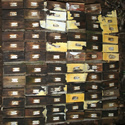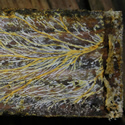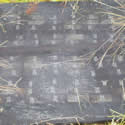Field Ground Proximity Decay Test Method
This method is a field test for evaluating the relative performance of wood treated with preservatives in a severe Use Category 3B exposure. It is designed to test wood preservative systems intended for use in exterior (fully exposed to the weather) above ground (no direct ground or soil contact) exposures where the wood does not have any additional protection provided by a surface coating.
The test method evaluates the performance of wood treated in a high moisture field exposure where it is subjected to the wide range of naturally occurring decay fungi and other micro-organisms present in the testing environment. Small wood samples are treated with the preservative system(s) of interest at a range of concentrations expected to include a minimum level for adequate performance. Untreated samples and reference preservative systems (and/or durable species) with a known history of commercial performance are included for reference. These samples are then exposed under field conditions in a high decay hazard above ground test. Samples are exposed in close proximity to the ground, but out of direct soil contact, by placing them horizontally on 100 mm high (nominal height) concrete masonry cinder blocks that are placed in direct ground contact. The cinder blocks keep the samples out of direct soil contact, but allow wicking of moisture from the soil to the test samples. The cinder block arrays are fully exposed in an outside environment, but protected from direct sunlight by a shade-cloth cover. The shade cloth allows rain into the arrays, but slows sample drying between rain events. The test arrays are designed to provide a uniform high-moisture content environment for above ground exposure similar to high hazard areas of a deck or similar construction. At periodic intervals, samples are examined for extent of fungal attack and rated for level of sample deterioration.The relative effectiveness of the test preservative systems in protecting against decay is compared with that of control materials and reference preservative systems. A standardized version of this method is AWPA Standard E18.
Images
References


